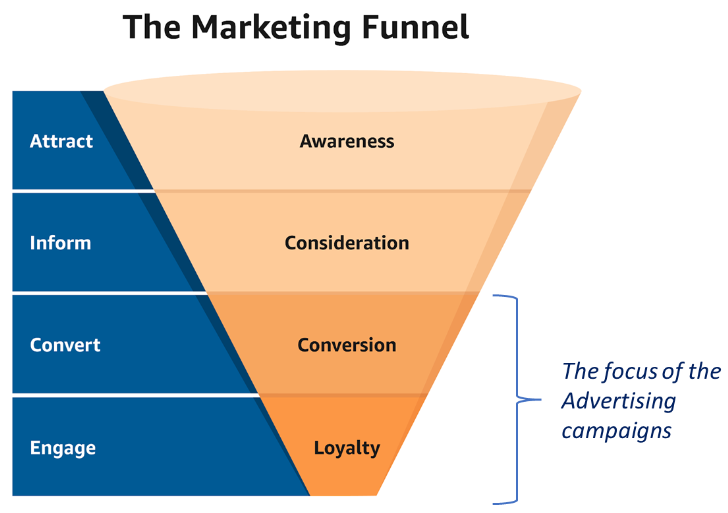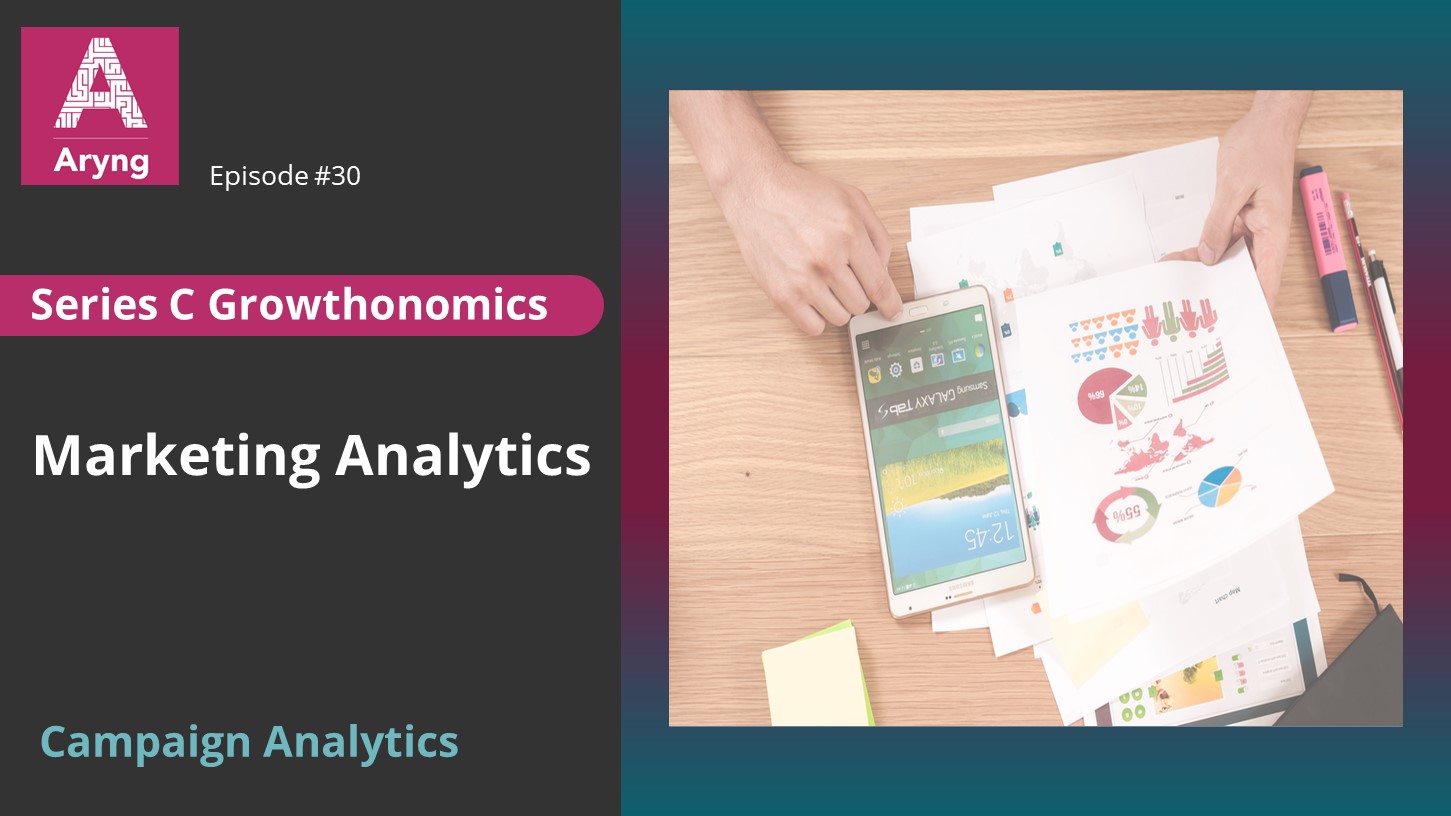Are you looking to generate revenue through advertising campaigns? Advertising campaigns are a powerful tool to drive revenue but cannot be done alone. They need inputs from other campaigns and analyses to be successful. In this blog, we will discuss how combining all campaigns and analytics helps drive revenue.
Advertising Campaign Analytics
Generating revenue through campaigns is a step-by-step process. It starts with brand campaigns creating awareness of a brand. Marketing campaigns encourage these aware users to use your product, develop a great user experience, and start thinking about purchasing your product or premium offerings. However, neither brand nor marketing campaigns can convert potential customers or users to paying ones. This is done through advertising campaigns.
What is an Advertising Campaign?
The brand and the marketing campaigns push the users down the marketing funnel and help define the strategies that drive sales and revenue. The advertising campaigns execute those strategies. They focus on the bottom of the marketing funnel, conversion, and loyalty.

The conversion converts your free users to paying users or your potential customers to buyers. Loyalty is retaining your paying users after the end of the subscription or making your buyers purchase more.
Unlike brand and marketing campaigns that are centered on the complete brand, advertising campaigns are focused campaigns aimed at converting the users to one of the products or services. Examples are campaigns promoting the sales of a new product or campaigns to increase the revenue generated through an existing product. These campaigns impact direct sales.
As you can see, advertising campaigns directly affect the company’s revenue. But the informed decision of which product to advertise, upsell or cross-sell; comes from the analysis of the marketing campaigns. So, let’s learn about the inputs to the advertising campaigns.
Inputs to the advertising campaigns
Marketing Channel/Media
We use different channels to run our brand and marketing campaigns. So, analyzing the performance of all the past campaigns helps determine the top X marketing media or channels for the campaigns. And we will only use the top channel or media to run our advertising campaigns. And this applies to both types of the target audience, the internal free users and potential external customers.
Consideration and Sentiment of your users
The brand awareness surveys need to be restricted to measuring awareness. They can be extended to understand the consideration and sentiment of the users towards your brand or specific product. So, these surveys can help determine whether the users will be inclined to purchase your product. A favorable consideration and sentiment of the users, yet a low conversion rate, is a strong indicator that you need to invest more in your advertising campaigns.
Sell/up-sell/cross-sell strategies
Let’s say you have been running some marketing campaigns to create awareness regarding the launch of a new product. Analyzing these marketing campaigns helps define a marketing strategy for your new product. Whether to launch pre-orders for your product, a campaign to promote sales or the pre-orders; comes from the marketing campaign analysis of your new product.
The marketing campaign analysis does not just help decide the strategies for your new product; it helps define the selling, up-selling, and cross-selling strategies for your products. These strategies act as input for your advertising campaigns.
Predictive Analytics
While deciding the selling, up-selling, or cross-selling strategies, you often want to answer questions like which product to sell to which customer or which customer is more likely to upgrade, or which products people buy together so that you can cross-sell. The qualitative approach to getting the answers is by analyzing marketing campaigns or surveys. But these are just indicative. With a good data infrastructure and the right tools, predictive analytics can answer such questions with a much higher probability. You can use historical data to create models to predict which customers will likely upgrade and to which product. Using these critical insights, you can decide to run advertising campaigns to draw customers into purchasing products.
Experiments
The problem with predictive analytics is that it often requires a large amount of historical data to train and test models. Unfortunately, not all companies have that. So, an alternate approach is to conduct experiments. The experiments help us validate many hypotheses regarding products, customers, and marketing. If the hypothesis holds, you can use the information to plan your advertising campaigns. In fact, you can use experiments to see if your campaign will perform well or not, even before you run them. To learn more about experiments, refer to the blog on how to run experiments successfully.
The above inputs help us define the strategy for our advertising campaigns. Now, let’s discuss the advertising campaigns that help execute these strategies.
Advertising vs. Promotional Campaigns
Until now, we have looked at advertising campaigns aimed at selling a new or existing product, up-selling to a higher product, or cross-selling a related product. But to boost sales, you can run promotional campaigns alongside. Some examples of promotions are discounts, offers, rewards for loyal customers, sample products, promotional events, and limited period trials.
The promotional campaigns have short-term goals; they are most cost-effective and yield quick results. But a lot goes into its planning. So, before you launch a promotional campaign, decide on the campaign goal. Then select your target audience, which mostly comes from predictive analytics. The third step is choosing the product you want to run the promotion for. This comes from your past campaign analysis, surveys, experiments, or predictive models.
It is essential to consider that the quick result of the promotional campaigns comes with the risk of creating a negative impact instead of the positive one. Instead of boosting sales and revenue, we may have a higher churn rate. Hence, analysis of these promotional and advertising campaigns becomes very crucial. And we know that any analysis starts with defining the KPIs and the metrics.
Metrics of Importance for the advertising campaigns
As discussed, the advertising campaigns focus on the bottom of the marketing funnel, i.e., conversion and loyalty. So, the first KPI of the advertising campaign is the conversion rate. The metrics that drive the conversion rate are the campaign’s reach, trials, quantities sold, and subscriptions sold, along with the downstream metrics like revenue, incremental revenue, and profits.
The advertising campaigns are also responsible for improving the loyalty of the customers. The metric that moves loyalty is the retention of the customers. You can increase retention through campaigns focused on engagement, offers, and discounts.
So, use your analytics team to understand the impact of your advertising campaigns on the conversion and retention of customers, thereby growing your revenues and profits.
Conclusion
Advertising campaigns cannot drive revenue alone. They need inputs from the brand and marketing campaigns. While the brand campaigns create awareness, the marketing campaigns create an excellent user experience. And both help define the marketing strategies to be executed using the advertising campaigns. In addition, predictive analytics and experiments help know which customers to target and which products to sell, up-sell, or cross-sell. They also help validate many hypotheses regarding products, customers, and marketing.
While advertising helps drive sales and revenue, the metrics that should be measured are the conversion rate and retention. So, use your analytics team to measure the correct metric from the advertising campaign data and treat revenue as the by-product.
I hope through the blog series on campaign analytics; you could gain all the information required to run your campaigns effectively. Keep an eye on some of the exciting topics related to analytics and data science. Until then, Happy Marketing!



